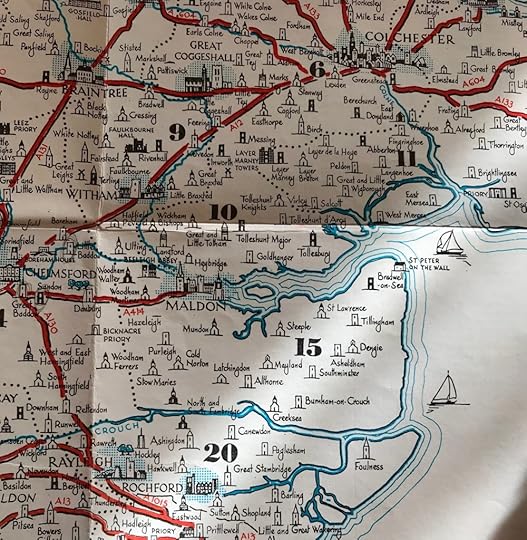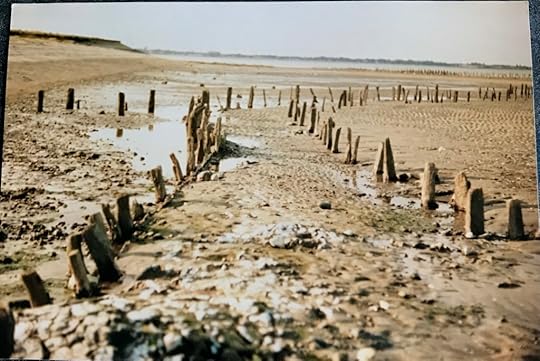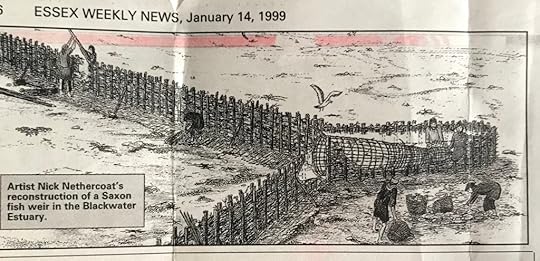Let’s Time Travel.


 View all responses
View all responses
In the early 80s, while walking along a coastal path on the Blackwater Estuary, I photographed a series of posts sticking out of the mud. The estuary of the River Blackwater is found between Maldon and West Mersea in Essex, England.
The River Blackwater rises as the River Pant in the northwest of the county of Essex, just east of Saffron Walden, and flows in a generally southeast direction to Bocking, near Braintree, via Great Sampford and Great Bardfield. At Bocking, it becomes the River Blackwater, and veers east to flow past Bradwell Juxta Coggeshall and Coggeshall. It then veers south, flowing past Kelvedon and Witham, before reaching Maldon. There, it veers east again and empties into the Blackwater Estuary, which in turn meets the North Sea at Mersea Island.

The series of posts seemed to be rough cut branches of trees as they weren’t uniform. They were in pairs and marked out in a V shaped as they stuck out of the mud at low tide. I was curious to know why they were there, and what were they used for. Nearly 20 years later, I found out via an article in a local newspaper.
The article headline read: Ingenuity of Early Saxon Fish Farmers:
The ancient upright timbers can be seen sticking out of the mud in 500 sites around the English coast, but in Essex they can be found near Osea Island, Tollesbury Fleet, Mersea Flats, Bradwell and nearby Pewet Island.

What I could see in the mud of the Blackwater Estuary, near Bradwell was all that remains of the fish weirs created 1,400 years ago by East Saxons.
The East Saxons were part of the Anglo-Saxons people. Essex was one of the kingdoms of Anglo-Saxon England. An area of early settlement, it probably originally included the territory of the modern county of Middlesex; London was its chief town.

The worn, paired stumps in rows often over 100 metres long, meet in a V shape. The walls would have been infilled with brushwood, and a large basket or net placed at the point of the V. The weirs worked on the principle that the fish followed the falling tide and swim into the wide open funnel of the V and as the tide goes out they are trapped in the basket. The fishermen would then gut the fish on site.
During a 1998 survey of the Blackwater Estuary, radiocarbon dating of the timbers from seven fish weirs established that the earliest were in use around 600AD. Most dated from the 8th century. This makes Essex East Saxon’s fish weirs the oldest in the country. The fish weirs went into decline about 12th to 14th centuries as the more commercial sea fishing grew more popular.
The Essex County Council archaeologist, Nigel Brown said (in the article) The constant waterlogging has preserved these monuments to the skill of East Saxon man. The biggest threats to their future survival are coastal erosion and modern boats. ‘We may try to get them marked on navigation charts as areas to avoid.’
I hope they have. I’m so glad I photographed the fish weirs when I did. I haven’t been back since. Maybe, I should make another visit to the site to see if they are still there.
I hope you find my blog post interesting.
Chat again tomorrow.



